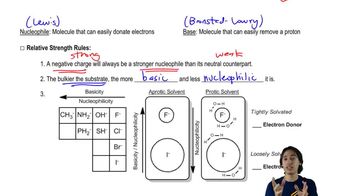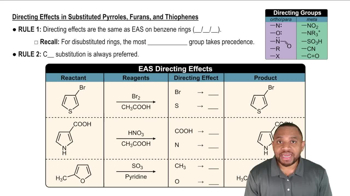Explain how each of the following changes affect the rate of the reaction of 1-bromobutane with ethoxide ion in DMF.
a. The concentration of both the alkyl halide and the nucleophile are tripled.
b. The solvent is changed to ethanol.

 Verified step by step guidance
Verified step by step guidance Verified video answer for a similar problem:
Verified video answer for a similar problem:



 0:38m
0:38mMaster Intro to Substitution/Elimination Problems with a bite sized video explanation from Johnny
Start learning